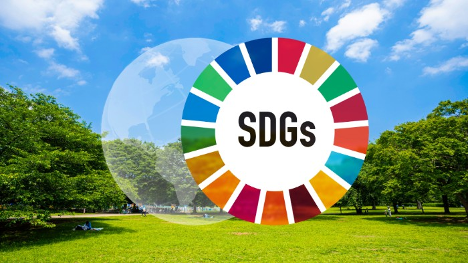
31 Jan United Nations Goals for Sustainable Development
Over the last five years, it’s been a privilege to serve as an advisor to the United Nations’ International Trade Centre (“ITC”) in two key initiatives – the Ethical Fashion Initiative and Alliances for Action, which focus on sustainable fashion and agriculture, respectively. The United Nations (“UN”) has set forth an ambitious and inspiring agenda to foster sustainable development, a series of goals designed to help create a more equitable, prosperous, and healthy world for all. For middle-market companies looking to make a difference in the world, these sustainable development goals provide an excellent place to focus their efforts.
From reducing poverty and inequality to promoting responsible consumption and production, companies can take many tangible steps toward sustainability. Whether you’re a small business or a large corporation, utilizing the UN’s sustainable development goals can substantially impact your company and the global community.
Focusing your resources towards achieving these goals can result in long-term benefits for both people and the planet. In this blog post, we’ll take a closer look at each of the UN’s 17 Sustainable Development Goals (SDGs) and how middle-market companies can effectively implement them.
What are the 17 Sustainable Development Goals (SDGs)?
On the first day of 2016, world leaders adopted the Sustainable Development Goals (SDGs) as part of the United Nations 2030 Agenda. These ambitious objectives are universal and apply to all countries, whose efforts will be focused on ensuring no one is excluded from these initiatives over the course of its 15 years plan.
Let’s look at each Sustainable Development Goal and explore how it provides potential opportunities to the middle market in the US, consisting of 200,000 companies and a combined revenue of over $10 trillion.
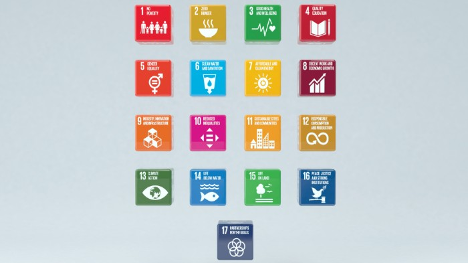
1. No Poverty
This Sustainable Development Goal is aimed at eradicating extreme poverty around the world. It is estimated that close to 685 million people live below the poverty line of $2.15 a day, while close to 1.2 billion live in ‘multi-dimensional poverty.’
Middle-market companies are crucial to achieving sustainable economic growth and providing underserved groups with increased opportunities, particularly those in least-developed countries. Corporate responsibility programs, alongside mindful decision-making, present an opportunity for these businesses to combat poverty while enjoying customer loyalty and rising brand awareness. These mid-sized firms are fundamental in the fight against global poverty and in creating a more socioeconomically secure environment.

2. Zero Hunger
Did you know that around 811 million people (10% of the world’s population) suffer from food hunger daily? The goal is to achieve a world where every person has access to sufficient and nutritious food.
This offers excellent opportunities for middle-market companies as it provides impetus to think innovative and create sustainable solutions through products and services in which they are involved.
By making their value chains more adaptable and broadening supply options to thrive during unexpected interruptions, businesses in the middle market have a chance to help the ‘zero hunger goal’ while also sustaining long-term profitability.

3. Good Health & Well-being
The third Sustainable Development Goal is dedicated to ensuring everyone’s healthy lives and well-being. Achieving this goal requires concerted efforts from developing countries and private entities worldwide. Middle-market companies can achieve this goal by providing reliable products and services, investing in healthcare initiatives, and creating full and productive employment opportunities.
Aside from contributing to society in meaningful ways, such actions can also benefit middle-market businesses through increased brand recognition, customer loyalty, and access to new markets. By doing this, middle-market companies can also reap financial rewards.

4. Quality Education
Achieving the fourth Sustainable Development Goal of providing quality education to all benefits children and presents an incredible opportunity for mid-market companies. These companies can help bridge gaps by funding improved & resilient infrastructure, offering access to educational materials and technical assistance, or investing capital and time into programs that promote smarter cities with a more educated talent pool and motivating young people to become entrepreneurs. Quality education presents an opportunity to gain knowledge and skills to help them bridge the gap between their dreams and reality.

5. Gender Equality
Ensuring gender equality is a United Nations Sustainable Development Goal that all countries strive to achieve. Middle-market companies can actively support gender equality by implementing equitable hiring practices that offer equal chances for both genders and people from diverse backgrounds. Furthermore, methods of evaluation and promotion should be based on merit, not bias, to ensure everyone gets a fair opportunity. This approach optimizes their talent pool and fosters peaceful and inclusive societies.
Companies that prioritize fairness and diversity in their hiring practices will undoubtedly see an increase in loyalty, productivity, morale, and a positive image with the public. On top of this, promoting gender equality is the right thing and should not remain an afterthought or act of tokenism. Instead, it must be considered integral to a holistic cultural transformation.
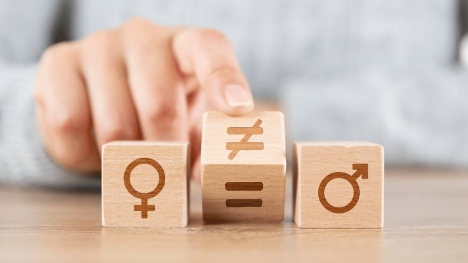
6. Clean Water and Sanitation
The United Nations has set an agenda to ensure that the global population has access to potable water and quality sanitation services. Middle-market companies can contribute to this effort by striving for water and wastewater neutrality in their organizational practices. This means leveraging technology and rethinking supply chains to reduce water consumption and waste generation while aiming toward zero discharge.
In addition to having a positive social impact, investments in pursuit of this SDG offer the potential for economic opportunities such as cost savings from operational efficiencies, expanded market access, improved brand recognition, and cost-competitive solutions for customers seeking sustainable products or services.

7. Affordable and Clean Energy
This Sustainable Development Goal aims to ensure access to affordable, reliable, and modern energy for all. Middle-market companies can help achieve this goal by transitioning from using fossil fuels, such as coal, oil, or gas, towards renewable energy sources like wind, solar, or hydropower.
This will result in manifold benefits: cut down carbon emissions which lead to climate change, reduce financial costs associated with automation and production, and enhance the company’s public image with greater environmental consciousness.
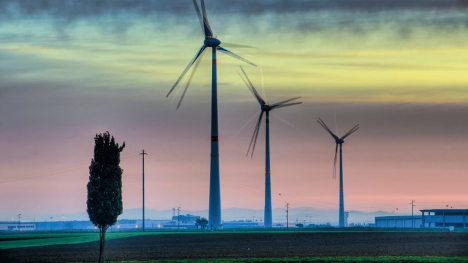
8. Decent Work and Economic Growth
This goal is critical to ensure that people worldwide can work and earn decent wages to support themselves and their families while promoting economic stability.
Middle-market companies, which form a significant part of any economy, can take active measures such as ethical hiring, workforce training, better wages, and job security through diversification & resilience planning.
Implementing these measures not only fulfills objectives but further offers long-term economic advantages like improved employee productivity & satisfaction, increased customer loyalty, and the ability to attract top talent.
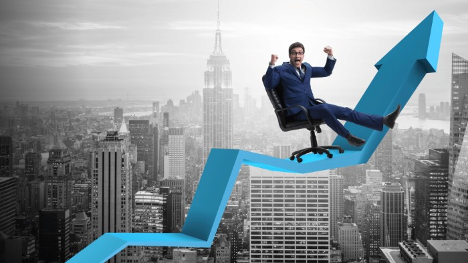
9. Industry, Innovation, and Infrastructure
This SDG aims to create a sustainable path for global economies to improve their production, technology, and communication systems.
Middle-market companies can impact the goal by focusing on renewable resources, developing infrastructure, creating job opportunities via tech, listening to community needs regarding infrastructure changes, and working toward inclusive and sustainable industrialization.
Additionally, prioritizing sustainable investment methods is an excellent opportunity for middle-market companies to distinguish themselves as forward-thinking entities that are as focused on economic development as they are on sustainable economic growth.

10. Reduced Inequalities
The Sustainable Development Goal of reducing inequalities calls for concerted and collective efforts from all sections of society.
Middle-market companies can use their resources to increase inclusion and decrease gender and wealth disparities worldwide. Working with local communities, investing in initiatives that promote economic development, and creating equal job opportunities for all sections of society are some ways these companies can contribute towards achieving this goal.

11. Sustainable Cities & Communities
The United Nations aims to make cities and human settlements inclusive, safe, resilient, and sustainable.
This goal provides a unique opportunity for middle-market companies through initiatives such as green building construction, urban renewable energy programs, improved transport systems, and strategies for conserving resources.
This can help build economically stable and environmentally aware communities and have access to safe and affordable housing. Investing in sustainable solutions helps create a better future and offers significant ROI potential.

12. Responsible Consumption and Production
This goal aims to ensure sustainable consumption, reduce waste creation and promote the efficient use of resources.
Middle-market companies can increase resource efficiency by optimizing materials utilization, increasing recycling rates, and introducing technology innovations. Adopting sustainable activities propels companies to environmental success, gives them a competitive edge in their market and helps make Sustainable Development Goals a reality. They must survey their global supply chains and track performance against crucial energy, water, and emissions indicators to operationalize this concept.
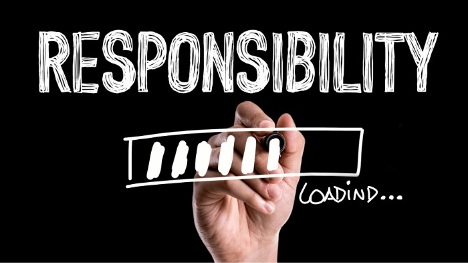
13. Climate Action
Climate Action calls for a global response to the urgent need to combat climate change.
Middle-market companies, the most significant part of any economy, can lead the way by leveraging technology and engaging employees with clean energy initiatives, reducing carbon emissions, and fostering long-term sustainability practices. As a result, this will protect our planet and ensure a sustainable future for generations to come.

14. Life Below Water
This Sustainable Development Goal emphasizes the need to conserve and responsibly use the world’s marine resources.
Businesses, especially middle-market companies, need to get involved in achieving this ambitious goal by raising awareness of environmental matters amongst their staff, reducing ocean-bound plastic waste, and investing in replenishment projects. Together with effective partnerships within the industry, these measures can promote sustainable development and protect our freshwater and marine resources from further deterioration.

15. Life on Land
This goal focuses on preserving and sustaining our life on land by tackling natural habitat destruction, deforestation, land degradation, and biodiversity loss.
We must all consider how we can contribute to this goal. Middle-market companies can play a significant role as they have the potential to create a large-scale impact in their communities. They can find ways to decrease natural resource consumption across their supply chain, generate sustainability reports based on data analyzing land usage, protect those most vulnerable to climate change-related impacts, and ensure that natural habitats are appropriately nurtured.

16. Peace, Justice, and Strong Institutions
The Sustainable Development Goal of Peace, Justice and Strong Institutions aims to ensure access to justice for all, reduce violence, and combat organized crime, terrorism, and other forms of corruption.
Middle-market companies can play their part by becoming more transparent in their operations and taking effective measures to eradicate corruption in their businesses. This reduces the likelihood of bribery, extortion, and other unethical practices which breed inequities that impede development. By taking these steps towards more excellent trustworthiness, companies contribute towards achieving a safer world free from violence.

17. Partnerships for the Goals
Partnerships for the Goals aim to empower individuals and organizations to work together to tackle the world’s most pressing issues.
Middle-market companies have an essential role to play, from adopting sustainable business practices to collaborating with other global businesses and partners seeking to contribute positively towards these SDGs. By joining together, companies create incredible opportunities for innovative solutions and real impact, forming a robust global partnership that contributes significantly to achieving the peace and prosperity our world desperately needs.

In Conclusion to, 17 Sustainable Development Goals
The 17 Sustainable Development Goals provide a framework for businesses, particularly middle market companies, to take actionable steps towards achieving global peace and prosperity. By leveraging technology, engaging employees in clean energy initiatives, reducing carbon emissions, minimizing ocean-bound plastic waste, investing in replenishment projects, and creating sustainability reports, these organizations can promote the well-being of our planet. It is through effective partnerships within their industry that these goals can be achieved and bring about meaningful change on an international level.
FAQs

What is the Global Sustainable Development Report?
The Global Sustainable Development Report (GSDR) is an annual UN report aiming to assess progress toward the 17 Sustainable Development Goals. It provides regional, national, and global perspectives on sustainable development and outlines recommendations for closing implementation gaps. The most recent edition of the GSDR was released in September 2019.
What is Global Indicator Framework?
The Global Indicator Framework (GIF) is a set of core indicators designed to facilitate global harmonization, comparison, and integration of data across countries and regions. It provides a standardized way for governments, international organizations, civil society, and the private sector to measure progress toward Sustainable Development Goals.
How can small businesses achieve sustainable economic growth?
Small businesses can achieve sustainable economic growth by adopting long-term strategies focused on increasing the efficiency of their operations, reducing the environmental impact of their production processes, and investing in new technologies and marketing initiatives.
Why is sustainable management needed?
Sustainable management is needed to ensure that resources are used responsibly and efficiently to meet current needs without compromising future generations’ needs. This includes reducing waste and pollution, optimizing production processes, conserving energy, and investing in renewable energy sources.
What is reverse land degradation?
Reverse land degradation is restoring degraded land to a more productive state. This involves identifying factors such as soil erosion, water scarcity, and deforestation causing land degradation, developing strategies to address these issues, and implementing these strategies to improve soil fertility, water availability, vegetation cover, etc.
What is the best way to foster innovation?
The best way to foster innovation is by creating an environment where ideas can flourish and be tested quickly. This includes providing access to resources, encouraging collaboration between teams within the organization or with external partners/customers, recognizing good ideas when they come up, and providing financial incentives for employees that develop innovative solutions.
What is official development assistance?
Official Development Assistance (ODA) is a form of financial aid developed countries provide to the least developing countries to promote economic development, poverty reduction, and social progress. ODA may include grants, contributions to multilateral organizations, technical assistance, and debt relief.
How can we promote sustainable agriculture?
Sustainable agriculture involves the use of environmentally-friendly farming practices to produce food in a way that is economically viable and socially responsible. It focuses on crop rotation, integrated pest management, efficient water use, soil fertility management, and conservation tillage.
What is meant by food security?
Food security is where everyone can access sufficient, safe, nutritious food to meet their dietary needs for a healthy life. This includes access to reliable supplies of food at an affordable price, resources to prepare it safely, and knowledge about nutrition so families can make informed decisions about what they eat.
How can we achieve food security?
Food security can be achieved through implementing sustainable agriculture, access to clean water, and education about proper nutrition. Sustainable agriculture helps reduce environmental damage, while access to clean water prevents illnesses. Education about good nutrition is also vital for overall health and well-being. Utilizing a combination of these measures allows communities to achieve food security.
What is equitable quality education?
Equitable quality education means providing all students with equal access to a high-quality learning experience regardless of their socioeconomic background or other factors. This includes ensuring the curriculum is up-to-date with relevant subject matter that reflects the diversity of cultures and backgrounds present in modern societies and providing resources such as trained teachers, technology, books, and materials needed for effective learning.


